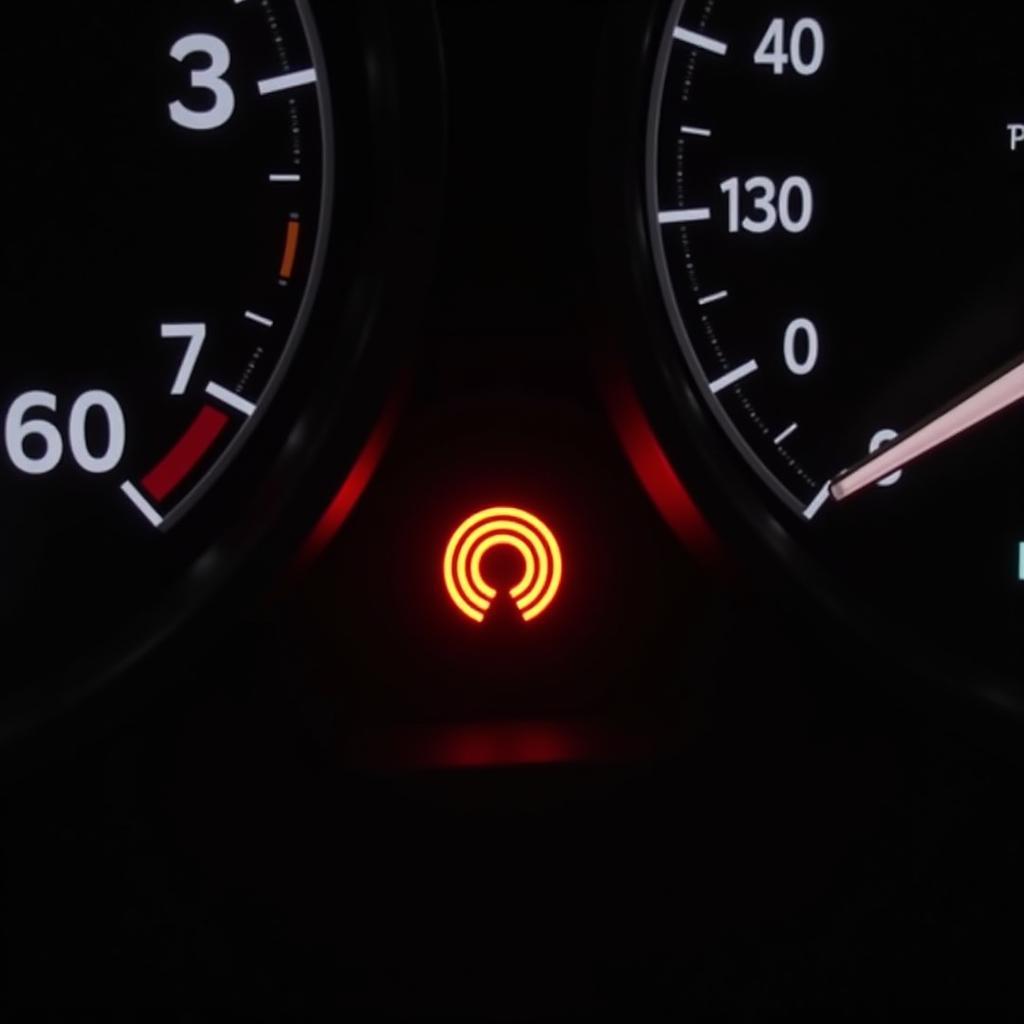The dreaded mercedes w211 brake wear warning light can be a source of anxiety for any driver. This guide delves into the causes, diagnostics, and solutions for this common issue, empowering you to address the problem effectively.  Mercedes W211 Brake Wear Warning Light
Mercedes W211 Brake Wear Warning Light
Understanding the Mercedes W211 Brake Wear Warning
The brake wear warning system in your W211 is designed to alert you when your brake pads are nearing the end of their lifespan. This system utilizes sensors embedded within the brake pad assembly. When the pad material wears down to a critical level, these sensors trigger the warning light on your dashboard. Ignoring this warning can lead to costly repairs and compromised safety. brake warning light w211 It’s crucial to understand this system to maintain optimal braking performance.
What Triggers the Brake Wear Warning?
Several factors can trigger the brake wear warning light. The most common culprit is worn brake pads. However, a faulty sensor, damaged wiring, or even a low brake fluid level can also illuminate the warning light. Diagnosing the root cause is essential for effective repair.
“A thorough inspection is key,” advises automotive expert, David Miller, ASE Master Technician. “Don’t assume it’s just the pads. A simple check of the brake fluid level and sensor wiring can save you time and money.”
Diagnosing the Problem
Diagnosing the mercedes w211 brake wear warning requires a systematic approach. Begin by visually inspecting the brake pads for wear. If the pads appear thin, they are likely the source of the warning. Next, check the brake fluid level. Low brake fluid can also trigger the warning light. Finally, inspect the sensor wiring for any damage or disconnections.
How to Check Your Brake Pads
- Safely jack up your vehicle and secure it with jack stands.
- Remove the wheel to access the brake caliper and rotor.
- Visually inspect the brake pads for thickness. If they are less than 1/4 inch thick, they need replacement.
- Check the brake pad sensor wire for damage.
how to reset brake warning light on mercedes Once you’ve identified the issue, you can proceed with the appropriate repairs.
Resolving the Brake Wear Warning
Once you’ve diagnosed the cause of the mercedes w211 brake wear warning, you can take the appropriate steps to resolve it. If worn brake pads are the culprit, replace them with high-quality replacements. If the issue is a faulty sensor or damaged wiring, replace the affected components. Finally, if the brake fluid is low, top it off and check for leaks.
Replacing Brake Pads on a W211
Replacing brake pads is a relatively straightforward task. However, if you are not comfortable working on your brakes, it’s always best to consult a qualified mechanic.
“Brakes are essential for safety,” reminds Susan Carter, Certified Automotive Technician. “If you’re not sure about something, it’s always better to err on the side of caution and seek professional help.”
brake pad warning tab top or bottom Understanding the position of the warning tab is crucial for correct installation.
Preventing Future Brake Wear Warnings
Regular maintenance is key to preventing future mercedes w211 brake wear warnings. This includes regular brake inspections, timely brake fluid changes, and using high-quality brake pads.
mercedes e320 brake warning light reset Knowing how to reset the warning light after repairs is essential.
e320 mercedes esp red brake warning light Understanding different warning lights is crucial for overall vehicle maintenance.
Conclusion
The mercedes w211 brake wear warning is a crucial safety feature. Understanding its causes, diagnostics, and solutions empowers you to maintain your vehicle’s braking system and ensure safe driving. Regular maintenance and prompt attention to warning lights can prevent costly repairs and keep you safe on the road.
FAQ
- What does the mercedes w211 brake wear warning light mean?
- How do I check my W211 brake pads?
- Can low brake fluid trigger the brake wear warning?
- How do I reset the brake wear warning light?
- What should I do if the warning light comes on again after replacing the brake pads?
- How often should I inspect my brakes?
- What are the signs of a faulty brake sensor?


